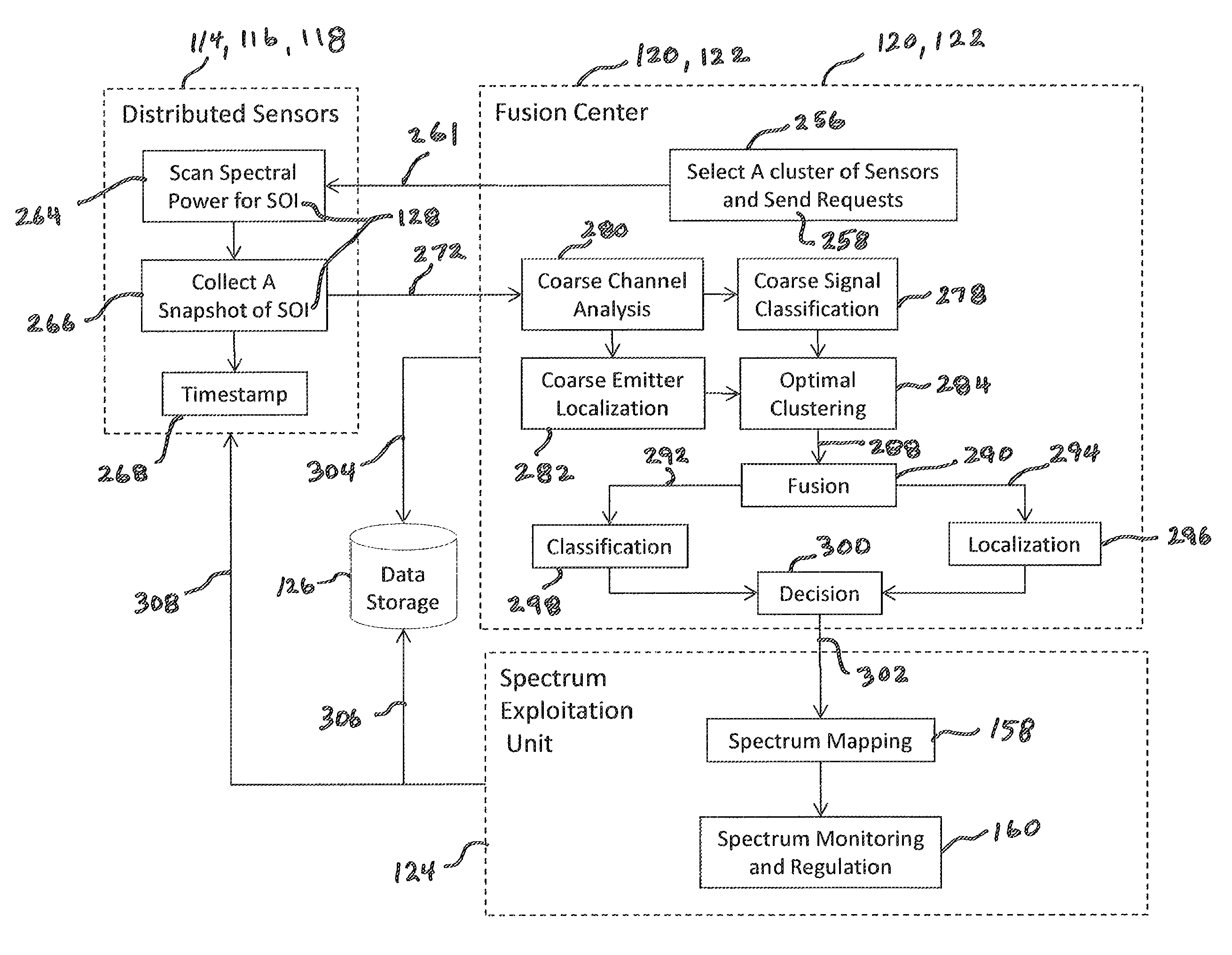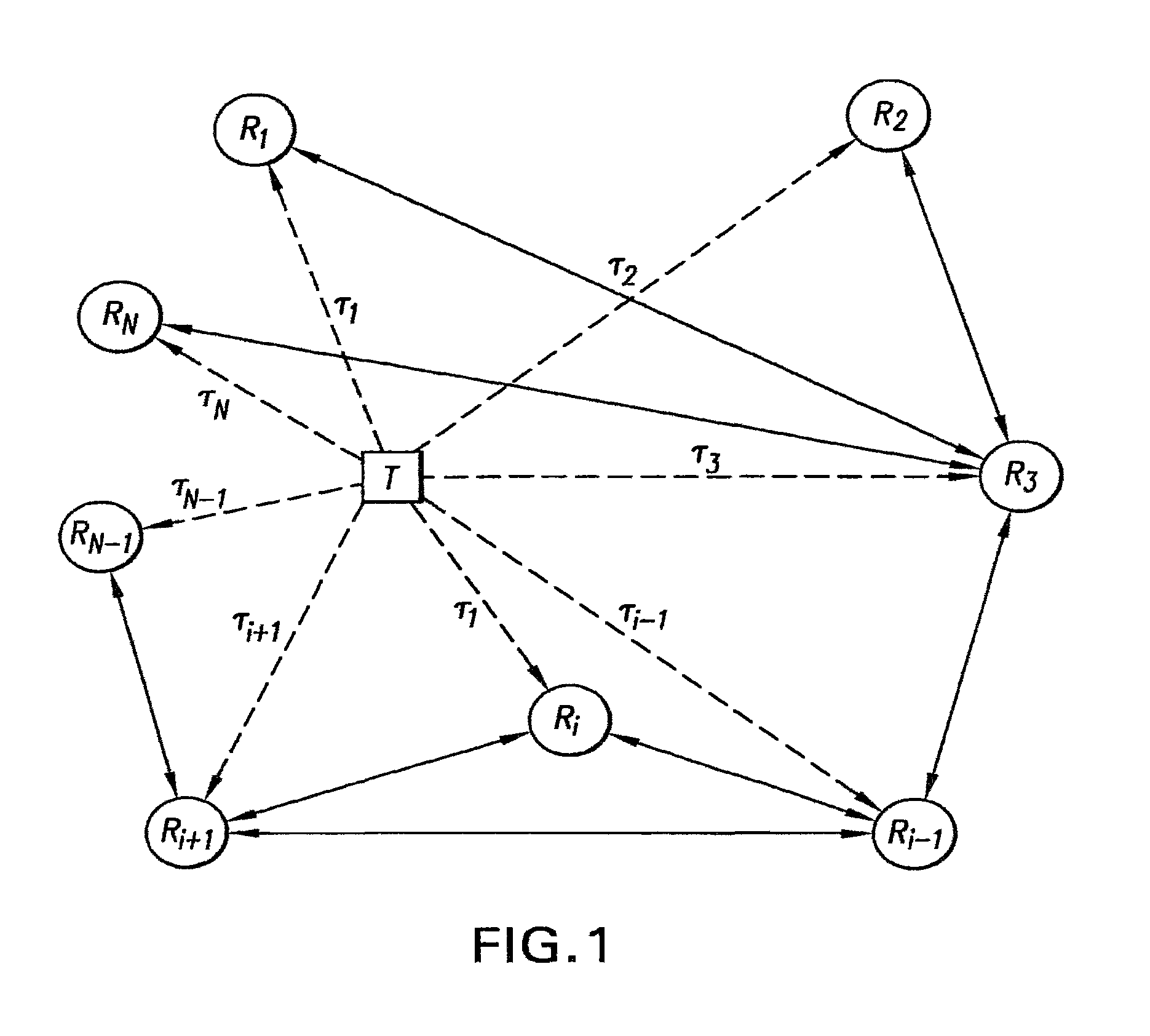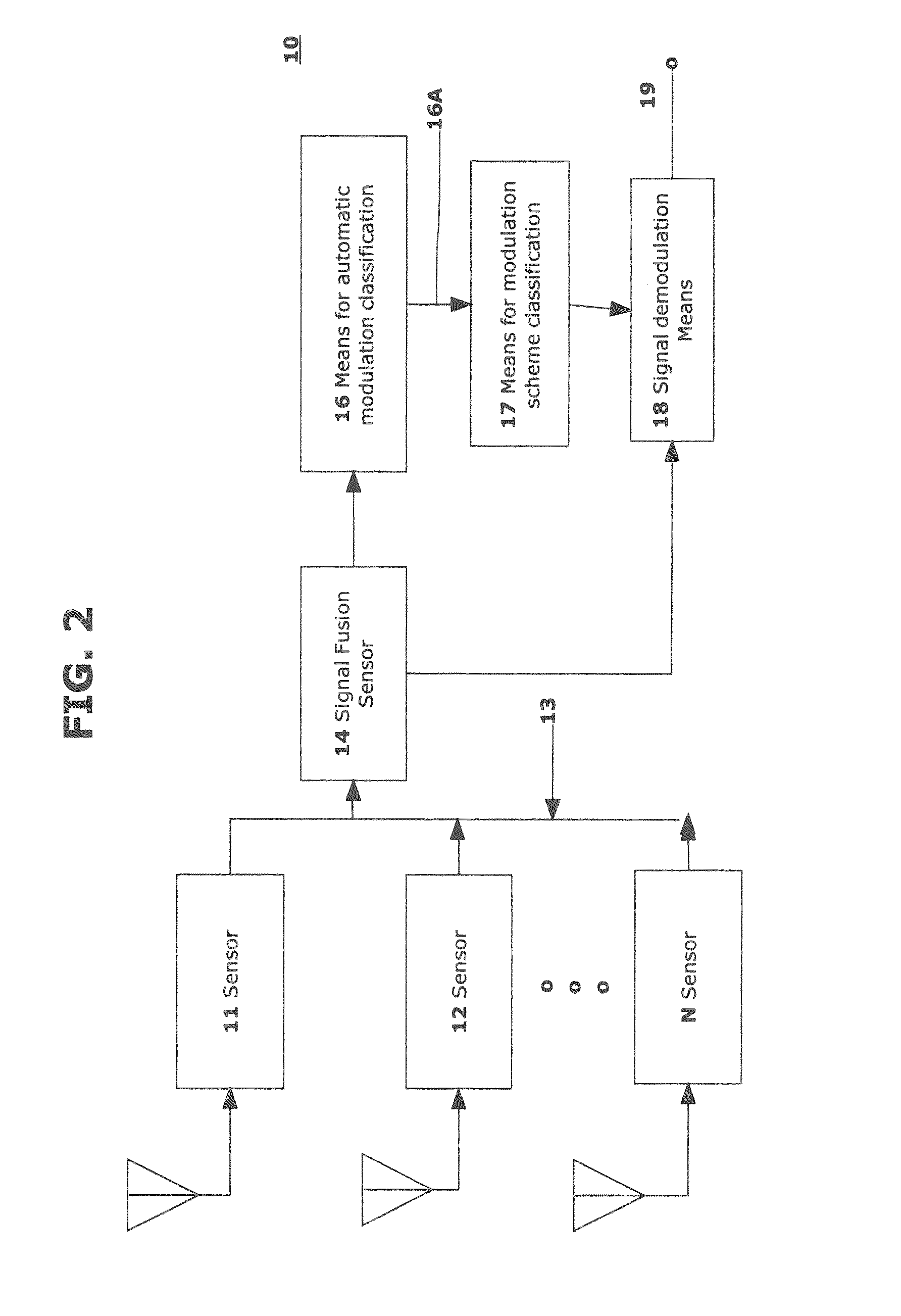Method of spectrum mapping and exploitation using distributed sensors
a distributed sensor and spectrum mapping technology, applied in the field of method and a system of signal collection networks, can solve the problems of limited knowledge of transmitting signals, unreliable, and difficult single sensor modulation classification of unknown weak signals, and achieve effective signal monitoring, huge overall performance gains, and increased reliability
- Summary
- Abstract
- Description
- Claims
- Application Information
AI Technical Summary
Benefits of technology
Problems solved by technology
Method used
Image
Examples
Embodiment Construction
[0045]In accordance with the present invention, fusing multiple signals in connection with non-cooperative demodulation affords a more effective demodulation without suffering from the limitations, shortcomings, and difficulties of single receiver configurations, such as receiving weak signals and classifying the unknown weak signal. FIG. 1 is a diagram illustrating a typical communication sensor network with an unknown transmitter T and N number of communication sensors, denoted by R1,, R2,, . . . , and RN. The unknown transmitted signal is transmitted by a transmitter T and is collected by sensors R1,, R2,, . . . , and RN non-cooperatively. In this diagram, the sensors can communicate with each other cooperatively, but they do not need to be fully connected. The sensors have no hand-shaking with the unknown transmitter, T.
[0046]FIG. 2 is a conceptual block diagram depicting a simplified version of the multi-sensor non-cooperative demodulation device 10, comprising a group of senso...
PUM
 Login to View More
Login to View More Abstract
Description
Claims
Application Information
 Login to View More
Login to View More - R&D
- Intellectual Property
- Life Sciences
- Materials
- Tech Scout
- Unparalleled Data Quality
- Higher Quality Content
- 60% Fewer Hallucinations
Browse by: Latest US Patents, China's latest patents, Technical Efficacy Thesaurus, Application Domain, Technology Topic, Popular Technical Reports.
© 2025 PatSnap. All rights reserved.Legal|Privacy policy|Modern Slavery Act Transparency Statement|Sitemap|About US| Contact US: help@patsnap.com



